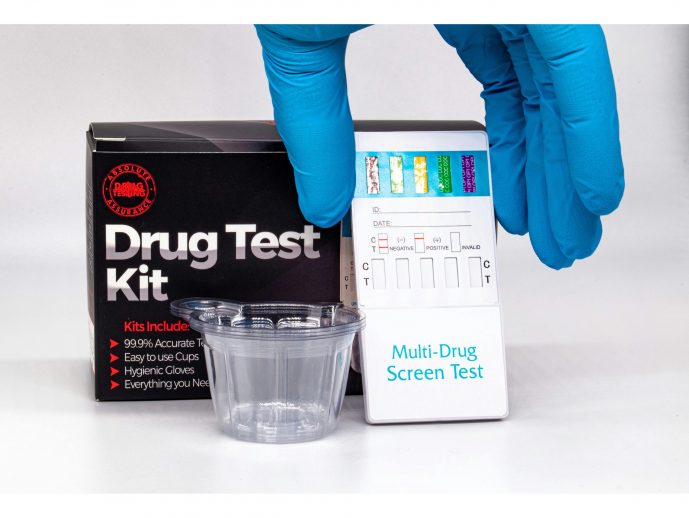Categories more
- Adventures (16)
- Arts / Collectables (15)
- Automotive (37)
- Aviation (11)
- Bath, Body, & Health (76)
- Children (6)
- Cigars / Spirits (32)
- Cuisine (16)
- Design/Architecture (21)
- Electronics (12)
- Entertainment (4)
- Event Planning (5)
- Fashion (44)
- Finance (9)
- Gifts / Misc (6)
- Home Decor (44)
- Jewelry (40)
- Pets (3)
- Philanthropy (1)
- Real Estate (14)
- Services (22)
- Sports / Golf (14)
- Vacation / Travel (60)
- Watches / Pens (14)
- Wines / Vines (24)
- Yachting / Boating (16)
Cutoff Levels Explained in the DOT Drug Test Protocol
Published
08/20/2025Navigating the world of drug testing can be daunting, especially when you're unfamiliar with the specifics. The DOT drug test protocol, a critical component for ensuring safety in transportation, revolves around the concept of cutoff levels. These levels determine whether a test result is considered positive or negative. Understanding these thresholds is not just about compliance; it’s about fostering a safe environment for everyone involved.
Understanding Cutoff Levels
Imagine giving someone a gift—something that brings joy and surprise. Similarly, cutoff levels in a DOT drug test can be seen as the gift of clarity, separating the positive from the negative, the safe from the potentially unsafe. These levels are standardized concentrations of specific substances in the body. When a test is conducted, the results are measured against these predefined values. If the concentration of a substance is above the cutoff level, the test result is positive; if it's below, the result is negative.
Cutoff levels are determined based on scientific research and regulatory guidelines. They are designed to detect recent drug use while minimizing the chances of false positives resulting from environmental exposure or accidental ingestion. For instance, the cutoff level for marijuana metabolites is set at 50 ng/mL for the initial screening and 15 ng/mL for confirmatory testing. These levels ensure that the test is both fair and effective.
The Role of Cutoff Levels in DOT Drug Testing
The rise of DOT drug testing has been a pivotal development in maintaining safety across various industries, especially those involving transportation. The Department of Transportation (DOT) requires drug testing for safety-sensitive employees, such as truck drivers, pilots, and railroad workers. The primary goal is to protect public safety by ensuring that individuals in these roles are not under the influence of drugs.
Cutoff levels play a crucial role in this process. They help distinguish between occasional or past drug use and current impairment, focusing on the latter. This distinction is essential because the DOT drug test aims to identify individuals who might pose a risk due to recent drug use. By adhering to these standardized cutoff levels, employers can make informed decisions that prioritize safety without unnecessarily penalizing employees for past behavior.
Anecdote on Device: The Testing Device That Changed Everything
Consider the humble device—a seemingly small invention, yet it can revolutionize entire processes. The introduction of advanced drug testing devices has transformed how tests are conducted and processed. These devices are designed to provide quick and accurate results, ensuring that the cutoff levels are consistently applied. With the help of these innovative devices, the dot drug test procedure has become more reliable, reducing the chances of human error and ensuring that every test is as accurate as possible.
Common Substances and Their Cutoff Levels
In DOT drug testing, there are five primary drug categories: marijuana, cocaine, amphetamines, opiates, and phencyclidine (PCP). Each category has specific cutoff levels for initial screening and confirmatory testing.
For cocaine, the initial screening cutoff level is 150 ng/mL, while the confirmatory level is 100 ng/mL. Amphetamines have a screening cutoff of 500 ng/mL and a confirmatory level of 250 ng/mL. Opiates are screened at 2000 ng/mL, with confirmatory testing at 2000 ng/mL for codeine and morphine, and 10 ng/mL for 6-acetylmorphine. PCP is screened at 25 ng/mL and confirmed at the same level.
These cutoff levels are not just random numbers; they are meticulously calculated to ensure that the DOT drug test accurately reflects an individual's current drug use, thus maintaining the safety standards required in the transportation industry.
The Importance of Staying Informed
As we delve deeper into the intricacies of DOT drug testing, it's clear that understanding cutoff levels is crucial for both employers and employees. For employers, it ensures compliance with federal regulations and helps maintain a safe work environment. For employees, it provides transparency and fairness in the testing process.
In a world where the stakes are high, staying informed about these protocols is essential. By doing so, you not only protect yourself and your organization but also contribute to a broader culture of safety and responsibility.
Anecdote on Rise: The Rise of Awareness and Its Impact
Much like the rise of a new dawn brings light to the world, the increasing awareness of DOT drug testing protocols has illuminated many aspects of workplace safety. As more people understand the importance of cutoff levels, there is a growing emphasis on education and prevention. This proactive approach not only reduces the incidence of drug use but also fosters a supportive environment where employees feel valued and respected.
In Summary
The DOT drug test and its associated cutoff levels are more than just regulatory measures—they are vital components of a comprehensive safety strategy. By understanding these levels, you can better navigate the complexities of drug testing, ensuring that both safety and fairness are upheld.
As we continue to advance in technology and awareness, the importance of these protocols will only grow. With each test conducted and each device utilized, we move closer to a future where safety is paramount, and every worker can perform their duties with confidence and clarity.
So, next time you think about the DOT drug test, remember the significance of cutoff levels. They are the silent guardians of safety, ensuring that we all can work in an environment free from the dangers of drug impairment.















